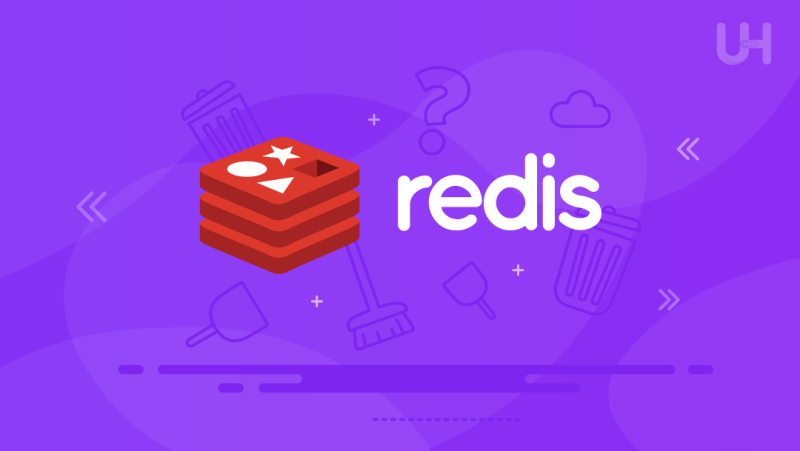With the Redis database, you can cache data to speed up the website loading. Check how Redis works, what you can gain if you use this solution, and what to do to enable it.
What is Redis?
Remote Dictionary Server is a NoSQL database – a modern data warehouse that speeds up websites and improve performance. Giants like GitHub and Instagram were among the first enterprises to start using it. Currently, Redis is one of the most frequently chosen non-relational databases.
By default, database files are saved on the server disk. However, in this case, it is different. The Redis server stores data in RAM rather than fetches data from the server’s disk. It translates into faster loading of the website that uses this solution. The reduced number of connections leads to less machine load, and Redis can handle even millions of requests per second.
By far, its greatest advantages include its excellent performance and multitasking. Searching for individual elements in the data structures is much faster than looking for them on a server disk. Redis caching helps to achieve sub-millisecond response times. The most effective Redis will be on the VPS server with SSD NVMe disks.
The most popular frameworks supported by Redis
Redis instance is a flexible solution. In modern applications it can be used for tasks such as key-value data store, data streaming, sending notifications, reducing content, or real-time analysis.
The most popular frameworks supported by Redis include
- strings, string lists, and string sets;
- storage structures for fields and values;
- data types for operations, i.e., bitmaps;
- structures for estimating unique elements, i.e., hyper logs.
Does Redis have downsides? Due to its characteristics, a database requires an immense amount of RAM. The size of the disks is not so important. It is such a successful project that it is difficult to find other flaws.
To make your website on WordPress fast, it is worth delving into the subject of web servers. Read the article in which you will find a comparison of Apache and LiteSpeed, and you will be able to choose the right hosting for your website more consciously.
The most popular use of Redis
Caching data
Redis as a cache significantly reduces the time you need to access data. It allows you to complete a variety of tasks in much less time. Caching also allows storing data for a longer time. The logged-in user will not lose their products or session data. The cache in Redis can also function when other elements of the page are down.
Traditional databases work primarily to provide the best possible functionality. It is not the case with Redis because the speed at scale counts here. Redis allows you to cache API responses even for a short while. It improves application performance and avoids lengthy communication between processes.
Geospatial data management
Redis runs data structures in memory cache in real time and offers large-scale geospatial data management. Redis implements location-based features to your application. It can be driving time, distance, or points of interest on the map.
Machine learning
Most new applications use machine learning to process enormous amounts of data as well as automate decision-making. Redis helps to detect fraud in games and financial services. The database can handle real-time auctions or provide travel routes and client tracking. Of course, these are just a few examples of using Redis. Fast data storage in RAM for machine learning models is a desirable solution in many industries.
Real-time analytics
Redis can be used as an in-memory data store to acquire, process, and analyze real-time data with sub-millisecond latency. Redis is perfect for social media analysis or ad management.
Streaming media
Redis client-side caching can support live broadcasts. It can store metadata about user profiles, browsing history, authentication information, and tokens. It also allows you to stream video content enabling millions of users to watch it on desktops and mobile.
Game Rankings
Redis is in high demand among game developers who use it to create tables with real-time scores. The Redis Sorted Set data structure guarantees the uniqueness of items while maintaining a sorted list according to user results. Creating lists and updating them is very easy!
Communicators
Redis will also handle chat rooms, comment streams, social media channels, and real-time communication in internal application servers.

Object Cache in WordPress
In WordPress, the default mode of caching uses the WP Object Cache class. It consists in caching the results of SQL queries to the database. It eliminates the need for frequent connection to the database and allows for fetch data faster. When loading WordPress, some data is downloaded from the database:
- all options from the wp_options table that have to autoload set to “true”;
- details of the logged-in user along with metadata;
- WP Query results: entries, pages, custom entry types with their metadata and taxonomies;
- information about the active theme;
- transients.
By saving it in the cache, you gain much faster access and do not have to perform multiple queries. The Object Cache mechanism is implemented in custom fields, too. When you add your own fields to an entry or page, the metadata stored in them is later automatically downloaded from the database together with the entry (using WP QUERY).
Then, when you display metadata, it retrieves data from the Object Cache before performing a query to the database. Other native functions in WordPress work in a similar way. Check whether a given option exists in the Object Cache; if not, send subsequent requests to the database.
The biggest problem is that the Object Cache in WordPress is non-persistent. It is created separately for each user whenever the page is loaded. The server destroys it when the user leaves the page. As the user navigates to subsequent subpages, the new object is created in memory, filled with data, and destroyed. During one session, reloading the page sent to the database the same queries.
To speed up WordPress even more, you can also use cache plugins. Read this article to learn about the best WordPress caching plugins.
Transients API
WordPress has a mechanism for storing data more persistently using the Transients API. It stores data as a separate record in the wp_options table. Transients store the results of complicated database queries or data downloaded from an external source in memory. Instead of sending this query to the database every time someone visits the website, WordPress can store the data in the transient for some time.
It allows you to reduce the time to access data. Instead of making a complicated and long query to the database, you get a faster query to the wp_options table. It is worth using the Transients API, especially that after connecting WordPress to Redis or Memcached, they will take over the storage of data from transients.
Redis cache in WordPress
After connecting WordPress to Redis, it takes over the storage of data from the WP Object Cache class object. Run Redis and the Object Cache becomes persistent.
When the first user loads the page, the server will save the resulting data from queries to the database in Redis. For subsequent users, the server will download data directly from Redis. Interestingly, transients are also captured by Redis, so you can still benefit from temporarily saving the server from multiple incoming requests.
All UltaHost servers support Redis. You can confidently choose any hosting from UltaHost and run Redis Cache on it.
The biggest impact of caching the page with Redis WordPress will achieve during the most sophisticated database queries. Redis in WordPress can also improve page loading speed when you have a lot of records in the wp_options table.
The first query to the database in WordPress is directed to this table. If it has a lot of records and old data, it may take a long time to search it. By storing the results of this query in Redis, we avoid searching the wp_options table every time the page is loaded.
Conclusion
Is it worth using Redis? It is not a standard database. The user has vast room for maneuvering to use it for his projects. The examples I describe are only a small fraction of what key-value databases can do.
It is worth delving into the documentation provided by the Redis developers. There you will find all the most crucial information that will help you implement new solutions and significantly speed up your work.
Do you want to find a fast hosting platform with Redis? Choose UltaHost! Built-in cache mechanism in all hosting plans enhances the speed of your websites and applications. Get 24/7 support from our support team. Our powered infrastructure focuses on auto-scaling, performance, and security. Let us show you the difference! Check out our plans!












